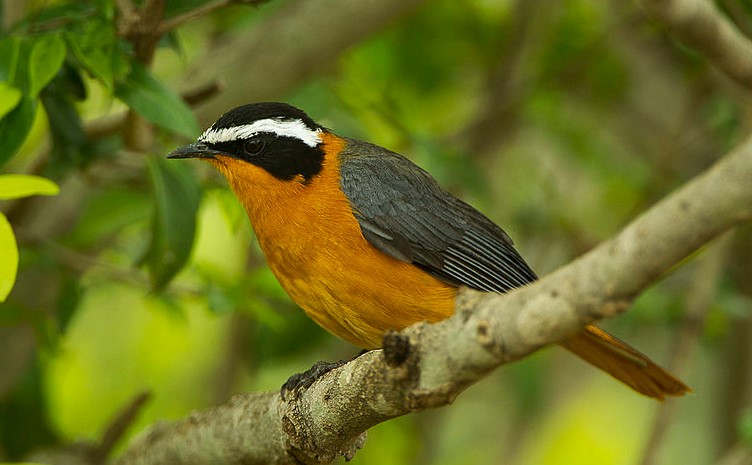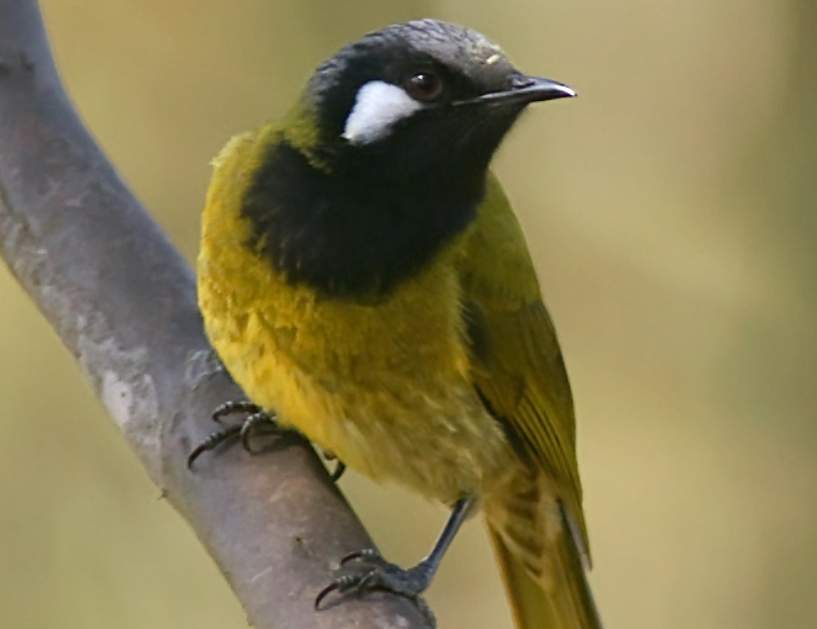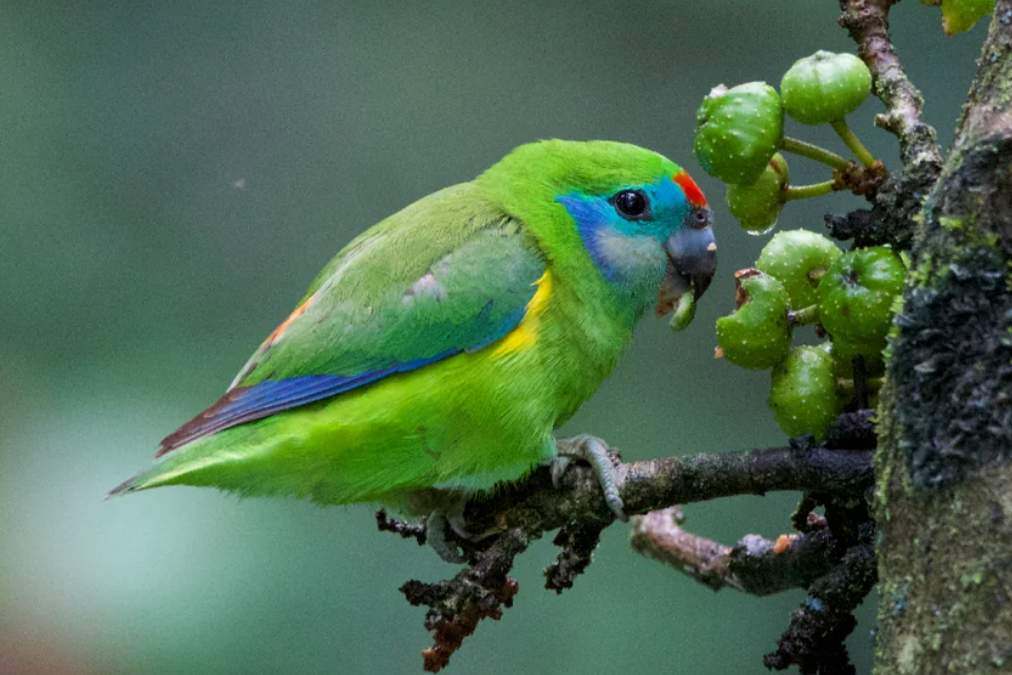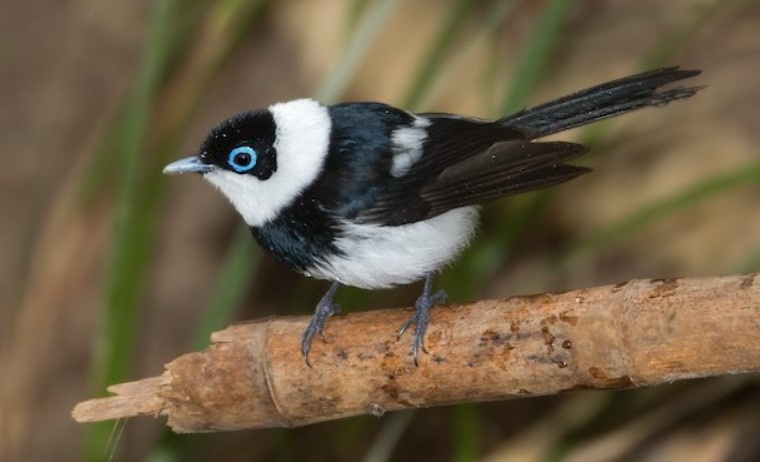The White-browed Robin habitat is galleries of vine scrub along streams and pockets of monsoonal rainforest in open eucalypt woodland across tropical northern Australia.
In the northwest and the Gulf of Carpentaria, it also occurs locally in mangroves. Like other robins, it is sedentary, with pairs or local groups of three or four occupying the same territory year-round. It lives in the shrubbery of the middle and lower forest strata. When it feeds, its movements are jerky and rapid, with much drooping of wings, tail-cocking, and flicking of wings and tails.
Its most common feeding behavior is to fly to the ground for a few minutes of foraging and then flit up into the trees again. It also chases insects like Jacky Winter and, like tree creepers, it searches for prey on tree trunks. It strongly resembles the Mangrove Robin in the way it clings to a trunk while extracting insects from crevices in the bark. It also hops on the ground. It eats insects, small beetles, green tree ants, caterpillars, and grasshoppers.
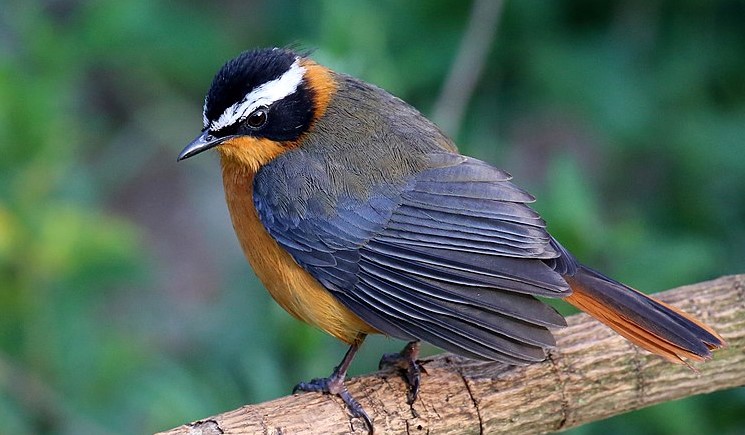
In mangroves, small crabs and molluscs are also picked up from the mud surface. There are two races. Poecilodryas superciliosa cerviniventris is found from Derby, WA, east to the Gregory River system south of Burketown, Qld; P.s. superciliosa occurs sparingly from the Mitchell and Coleman Rivers on the west of Cape York Peninsula, south along the east coast to Broad Sound, Qld. It is the smaller of the two white-breasted races and lacks the rusty flanks and undertail coverts of the northwestern race.
This is also known as Buff-sided Robin, Buff-sided Shrike Robin, White-browed Shrike Robin, and Buff-sided Flycatcher. The size of a white-brewed Robin is about 150–180 mm in length. Both sexes are alike. The crown, cheeks, and upper parts are warm, dusky brown, darker on the crown and face. Furthermore, a small white crescent under the eye and a broad white brow over the eye are visible.
Wings and tail dusky, with a broad white band through the base of flight feathers and the edge of greater coverts, a second narrow white band in the middle of primaries, and inner secondaries edged white; tail with broad white tip except for central pair of feathers. Underparts, from the chin and sides of the neck to the undertail, washed lightly or heavily grey across the breast and without or with rusty flanks and undertails, respectively, according to 10 races. Eyes are black-brown. Bill is black. Feel dark grey-brown to black. The immature are like adults but duller.
The call of a White-browed Robin consists of a series of soft, piping whistles, repeated three or four times, by both sexes in contact. The song consists of three or four sharp churring notes, slurred together, by males or sometimes both sexes in the territorial advertisement. Also, a series of sweetly trilling whistles
Nesting and breeding occur in July-March. nest is a loosely woven cup of plant stems, tendrils, rootlets, twigs, and cobwebs, decorated with strips of bark and sometimes moss and lichen; lined with fine grass stems, plant fiber, and tendrils; placed in the fork or upright crotch of a tree usually 1-3 meters above the ground.
The robin lays two smooth eggs, usually yellow-green, green-grey, blue-green, or buff-green, spotted with browns all over, or in an indistinct zone at the larger end; they are oval or long-oval in size, approximately 20 x 15 millimeters long.
The White-browed Robin is found in gallery forests and on river systems in coastal northern Australia, from Derby, WA, to Broad Sound, Qld. There are two races: one in the east and one in the west.
Related Reading: Dusky Robin (Melanodryas vittata)
